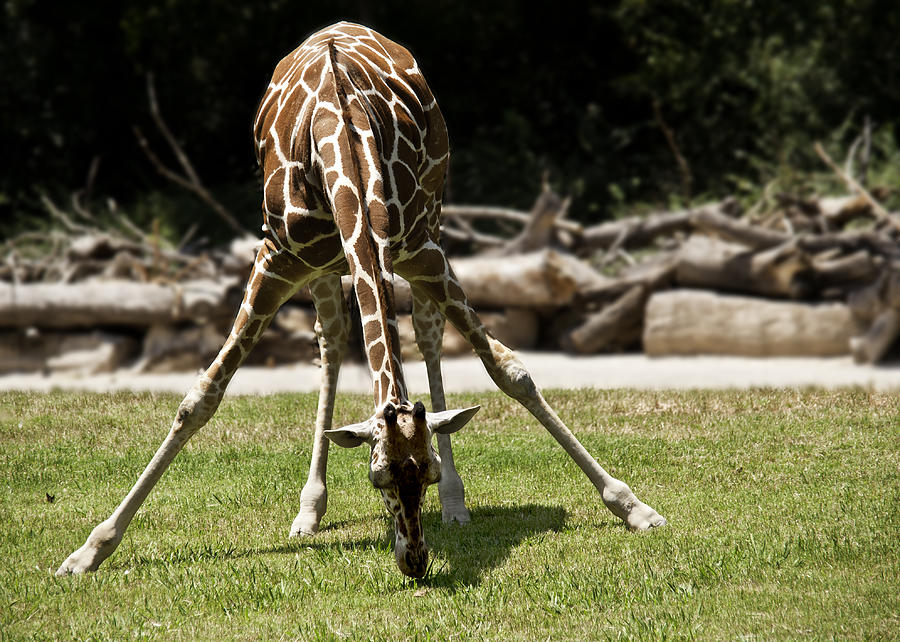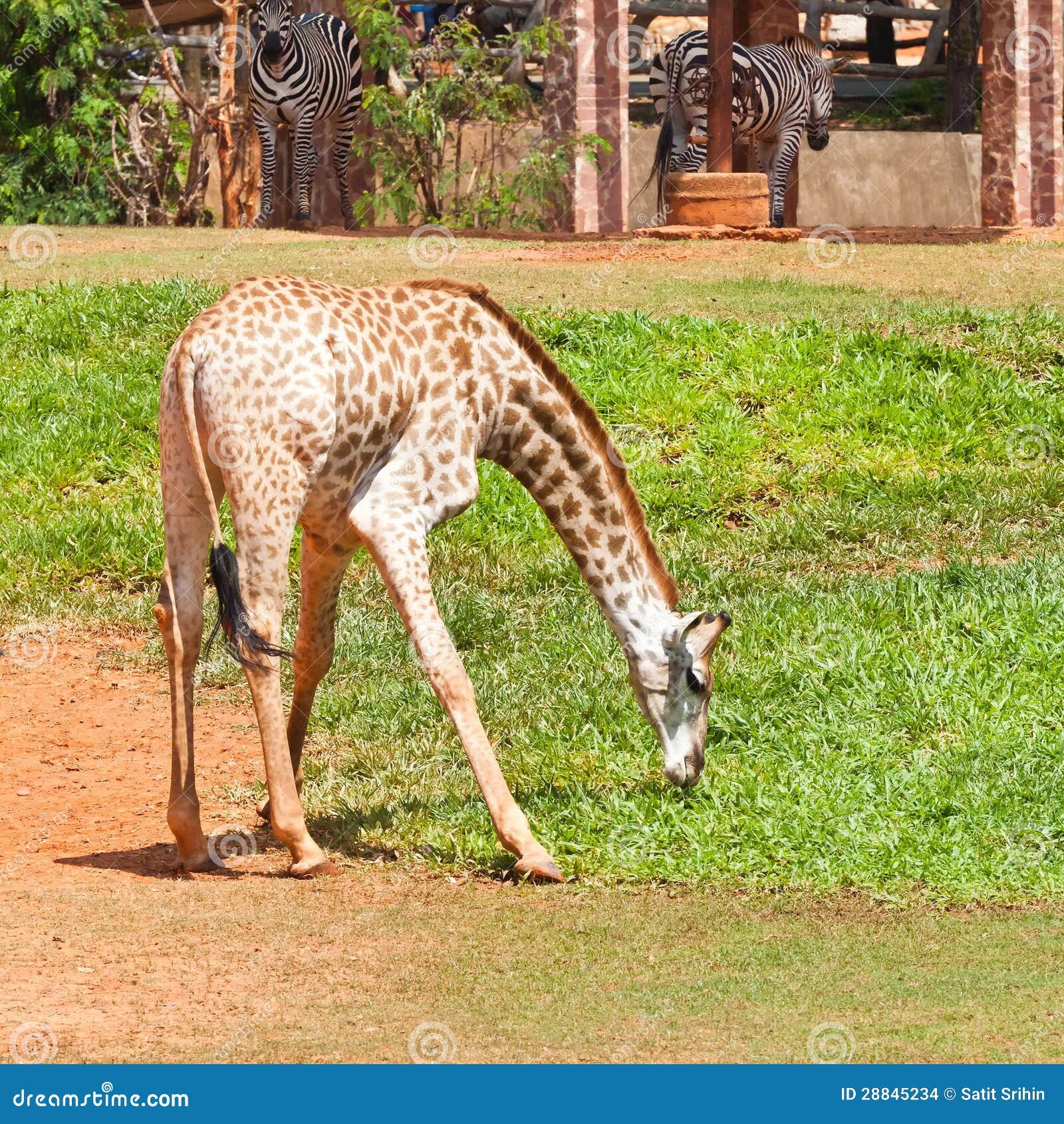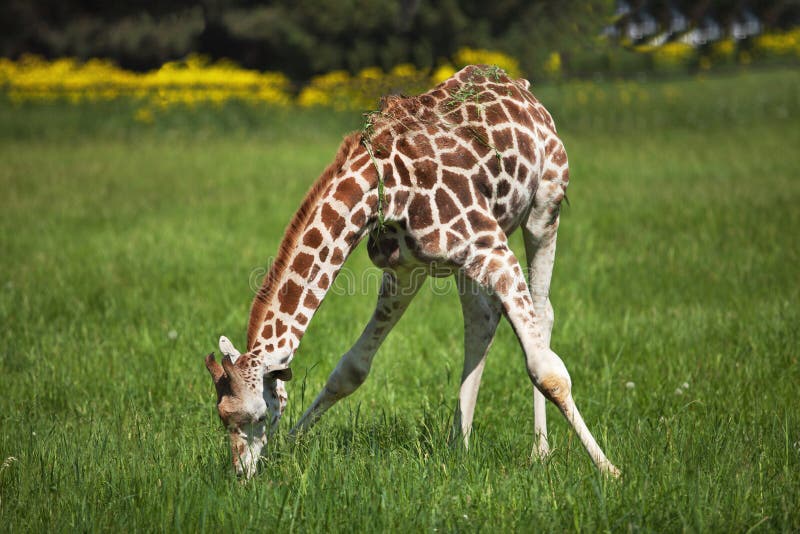Giraffe Diet: What Do They Eat? Leaves, Not Just Grass!
Why do these towering giants of the African savanna, with necks that reach for the sky, choose leaves over the readily available grass that blankets the plains? The answer lies in their distinct feeding habits, making them browsers rather than grazers and shaping their lives in fascinating ways.
Unlike most large herbivores, giraffes are not grazers; they are browsers. This means their dietary preference leans towards leaves, buds, flowers, fruits, and twigs, particularly those found high up in trees and shrubs. They are known to frequent trees like acacia, mimosa, and wild apricot, relishing the leaves and young shoots that provide essential nutrients. This dietary specialization allows them to access food sources that other herbivores cannot reach, giving them a unique advantage in their environment. Giraffes in the wild exhibit a distinct fondness for the leaves of the nutritious acacia, bushwillow, and sausage trees, showcasing their selective approach to feeding.
Here's a closer look at the fascinating world of the Giraffe:
| Attribute | Details |
|---|---|
| Common Name | Giraffe |
| Scientific Name | Giraffa camelopardalis |
| Habitat | Savannas, grasslands, and open woodlands across Africa. |
| Diet | Primarily leaves, buds, flowers, fruits, and twigs. Occasionally grass. |
| Feeding Behavior | Browsers, not grazers. |
| Daily Food Consumption | Up to 75 pounds (34 kg) |
| Favorite Foods | Leaves of acacia, mimosa, and wild apricot trees. |
| Lifespan | 20-27 years |
| Conservation Status | Vulnerable (as of 2016, with varying statuses for subspecies) |
| Key Physical Feature | Remarkably long neck, allowing them to reach high into trees. |
For more detailed information, please visit the World Wildlife Fund's giraffe page.
The diet of a giraffe is a carefully curated selection from the plant kingdom. They are primarily browsers, meticulously choosing their meals from the foliage of trees and shrubs, a trait that sets them apart from grazing animals that feed on ground-level vegetation. The leaves of the acacia and mimosa trees are particularly favored. Academic research highlights that giraffes can consume up to 85% of new acacia shoots, showcasing the importance of this plant in their diet. The southern giraffe and the masai giraffe, for instance, have diets that vary slightly depending on their geographic locations, but both rely heavily on tree leaves, shoots, flowers, bark, pods, and seeds.
The question then arises: how much does a giraffe consume each day? An adult giraffe can eat up to 75 pounds (approximately 34 kilograms) of food per day, a significant amount needed to fuel their towering frames and active lifestyles. This consumption is fueled by a wide array of plant life. They are not limited to just leaves, though, as their diet also includes buds, flowers, and fruits, ensuring they receive a balanced intake of nutrients. While grass might be available in their habitat, it only constitutes a minor portion of their diet.
It is important to clarify the common misconception that giraffes are exclusively herbivores, primarily consuming plant matter. They will eat meat when push comes to shove, or chewing on an old bone now and then. This behavior, known as osteophagia, is often observed, especially in pregnant female giraffes, and suggests a need for additional minerals, such as calcium and phosphorus, which are vital for their health. Giraffes, as herbivores, primarily consume plant material. They are browsers, favoring leaves, twigs, and occasionally grasses, flowers, and fruits when available.
The giraffe's feeding habits are a testament to its adaptability. They display a versatility that allows them to thrive in the diverse landscapes of Africa. In most areas, the leaves and shoots of the Vachellia or Senegalia trees (formerly known as Acacia) make up a significant portion of their diet. These trees, abundant on the African plains, provide a consistent and nutritious food source. They also supplement their diet with herbs, climbers, vines, flowers, fruits, and seeds when in season. This varied diet supports their survival across their scattered range, which extends from Chad in the north to South Africa in the south, and from Niger in the west to Somalia in the east.
While giraffes are primarily browsers, not grazers, they occasionally consume grass, but it's a minor part of their overall intake. Their preference for browsing is linked to the nutritional benefits and the accessibility of the higher branches of trees and shrubs. While grass grows widely across their habitat, giraffes have evolved to maximize their access to the more nutritious parts of the plants, helping them to thrive in environments where other herbivores may struggle.
The acacia tree holds a special place in the giraffe's diet. There are over 1,300 species of acacia trees, and they are a staple for these majestic animals. Giraffes typically eat leaves from acacia trees, mimosa trees, and wild apricot trees. The most iconic tree in a giraffes diet is the acacia tree, which can represent up to 85% of their diet. The leaves of the acacia and mimosa trees are their favorite food, but they will also eat other leaves, seeds, buds, and branches of trees. They also supplement their diet with herbs, climbers, vines, flowers, fruits, and seeds when in season.
In the wild, giraffes are not at the top of the food chain. They inhabit the savannas, grasslands, and open woodlands where predators like lions, hyenas, and wild dogs can pose a threat, particularly to young giraffes. But the giraffe's impressive height offers a great advantage, with their ability to spot predators from a distance. Despite this, adult giraffes often fall prey to lions, and even the largest giraffe cannot escape the king of the jungle sometimes. However, Giraffe are still strong and can kick the predator with strong force and their height gives them an advantage.
Giraffes are remarkable creatures, their feeding habits dictating their place in the ecosystem. They are browsers, not grazers. They eat many things besides their favorite leaves. Their diet is a testament to their ability to adapt and thrive in their unique environment. From their preference for acacia leaves to their capacity to eat up to 75 pounds of food daily, giraffes offer a great insight into the diverse life of the African savanna.


